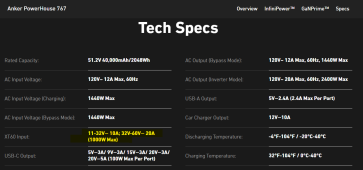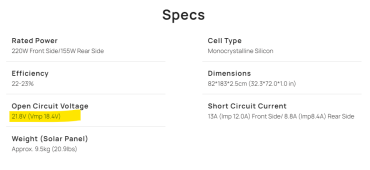Consinpelos
New Member
- Joined
- Nov 16, 2022
- Messages
- 5
Hello everyone,
I am new to this forum as well as a newbie to this new solar world. To understand how things work, I want to start somewhere and learn by doing. I am not good with doing the math or with physics so forgive me please if I dont know the basics. I would like to get my hands on an Anker 767 with an EcoFlow 220W bifacial solar panel. Would anyone be so kind as to help me understand, if the solar panel...

 us.ecoflow.com
us.ecoflow.com
...will work properly with the energy storage...

...regarding the tech specs. The wattage seems to match but I am confused with the Volt and Ampere figures.
Any helpful advice is appreciated.
Thank you in advance
I am new to this forum as well as a newbie to this new solar world. To understand how things work, I want to start somewhere and learn by doing. I am not good with doing the math or with physics so forgive me please if I dont know the basics. I would like to get my hands on an Anker 767 with an EcoFlow 220W bifacial solar panel. Would anyone be so kind as to help me understand, if the solar panel...

Buy EcoFlow 220W Bifacial Portable Solar Panel - EcoFlow US
Official EcoFlow 220W Bifacial Solar Panel: ✓ Foldable ✓ Approx. 20.9 lbs. Click to learn more!
...will work properly with the energy storage...

Anker 767 PowerHouse - GaNPrime 2048Wh | 2400W
Equipped with a massive 2048Wh and capacity and huge 2400W AC output, Anker PowerHouse 767 lets you charge longer, adventure farther, and stay limitlessly powered at home or off the grid.
www.anker.com
...regarding the tech specs. The wattage seems to match but I am confused with the Volt and Ampere figures.
Any helpful advice is appreciated.
Thank you in advance




